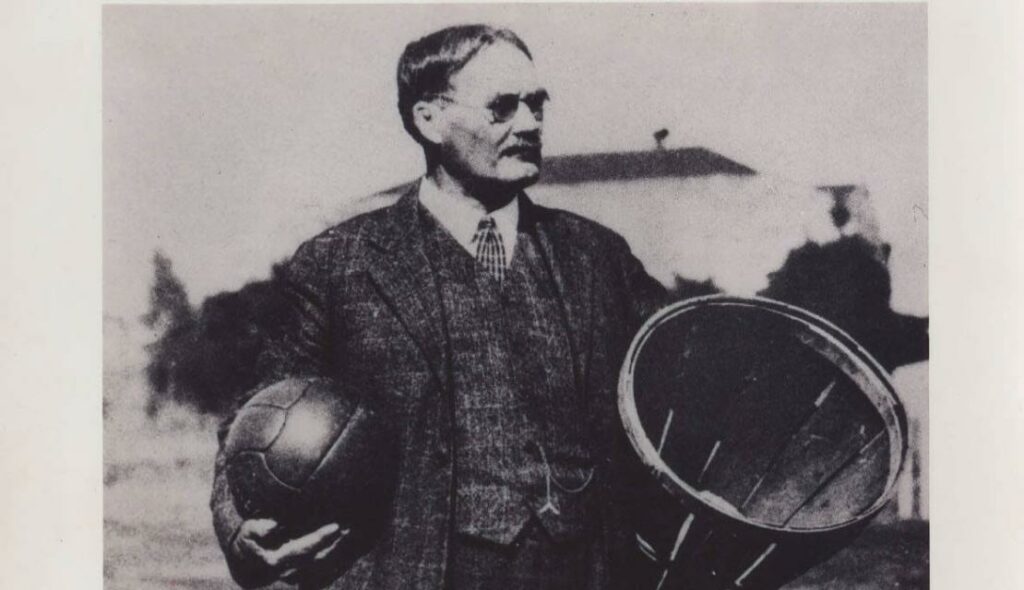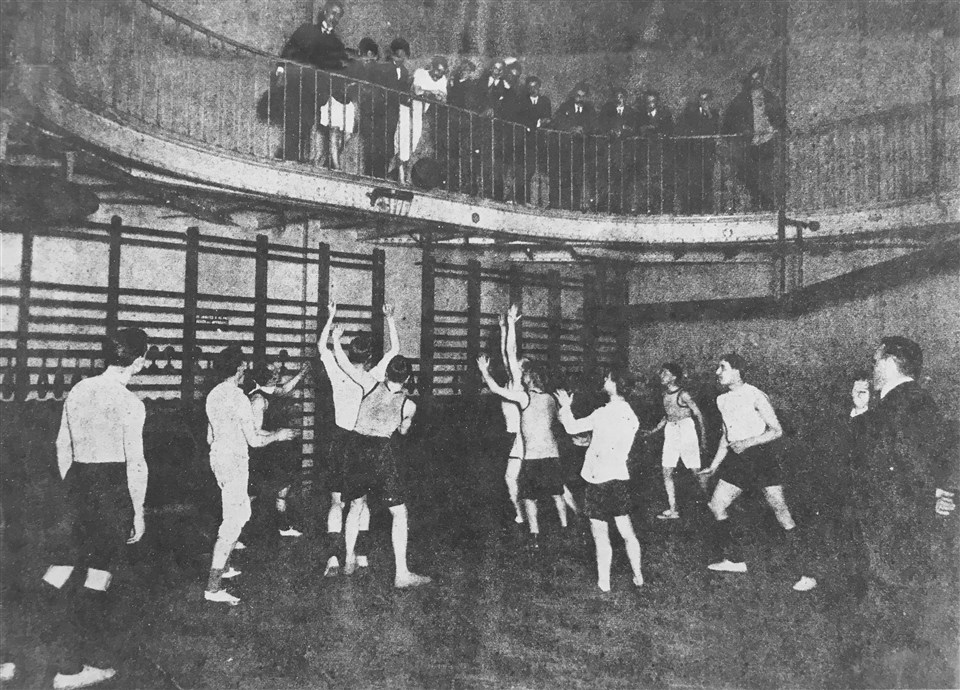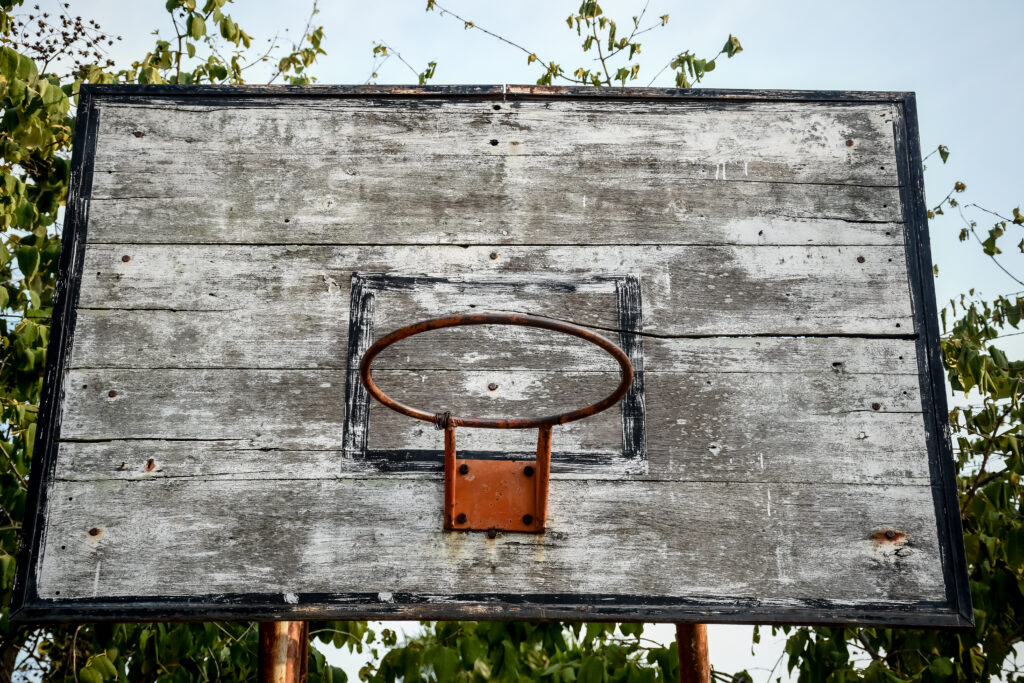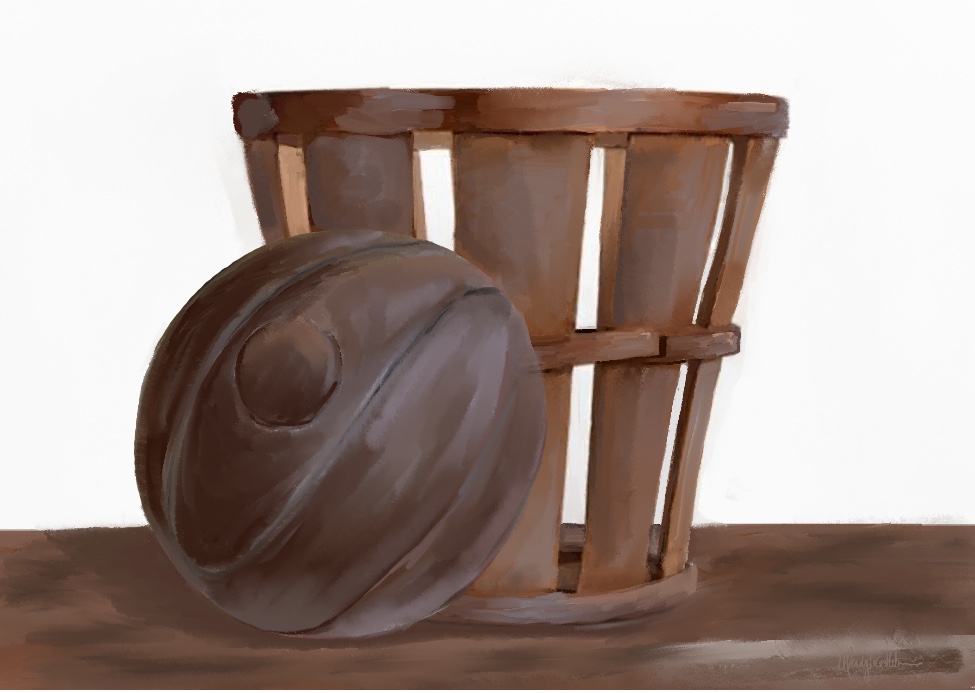Basketball
Peach Baskets and Hoops: Tracing the Roots of Basketball
INTRO
In the annals of sporting history, few tales are as captivating as the evolution of basketball—a journey marked by ingenuity, adaptation, and a relentless pursuit of excellence. At the heart of this narrative stands Dr. James Naismith, whose visionary mind birthed a game that would capture the imagination of millions navigated numerous challenges, from chaotic early games to the refinement of rules that would shape basketball’s future.

The Birth of Basketball
As the harsh New England winter bore down on Springfield, Massachusetts, Dr. Naismith, a physical education instructor at the International YMCA Training School, pondered ways to keep his students active indoors. In a stroke of inspiration, he conceived a game that would later become known as basketball.
The quintessential American sport of basketball boasts a rich history that dates back to a crisp winter day in 1891 when Dr. Naismith, faced with the challenge of devising this new indoor activity, birthed what would become a global phenomenon. But the story of basketball’s inception is more than just the creation of a game; it’s a tale of ingenuity, improvisation, and the indomitable spirit of innovation.

The Evolution of the Game
Naismith’s initial vision was simple: two goals, 18 inches square, to be placed at opposite ends of the gymnasium. Seeking materials for his makeshift goals, he turned to the school janitor, hoping to procure two suitable boxes. However, fate intervened in the form of the janitor’s unexpected discovery: two peach baskets.
Undeterred by the unconventional choice of baskets, Naismith pressed on with his plan. With the help of the janitor, the peach baskets were affixed to the lower rail of the gymnasium balcony, one at each end. Remarkably, the height of this lower rail happened to be ten feet, a serendipitous alignment that would define the future of the sport.
To ensure the smooth flow of the game, Naismith stationed a man at each end of the balcony to retrieve the ball from the basket and put it back into play. It wasn’t until several years later that the bottoms of the peach baskets were finally cut, allowing the ball to fall freely—a modification that would revolutionize the sport and pave the way for its rapid evolution.
The Inauspicious Start
When Dr. Naismith introduced his students to his newly designed indoor game, the initial game quickly devolved into chaos, as recounted by Naismith himself during a radio program in 1939. “The boys began tackling, kicking and punching in the crunches,” he recalled. “They ended up in a free for all in the middle of the gym floor before I could pull them apart.”
The aftermath of this first game was sobering, with injuries ranging from black eyes to a dislocated shoulder. Naismith was understandably concerned about the safety of his students and the future of the game he had created.

The Birth of Rules
Despite the chaos of the initial game, Naismith recognized the enthusiasm of his students for the new sport. Encouraged by their persistence, he set out to create a set of rules that would govern the game and ensure its safety and fairness. “After that first match, I was afraid they’d kill each other,” Naismith admitted.
“But they kept nagging me to let them play again, so I made up some more rules.” With each iteration, Naismith refined the rules, introducing measures to promote sportsmanship and minimize physicality. The result was a game that emphasized skill, strategy, and teamwork—a stark departure from the rough-and-tumble chaos of its inception.

Transition to Metal Hoops
In those nascent years of basketball, the clatter of a ball against the woven strands of a peach basket echoed through gymnasiums across America. However, as the game gained popularity and crowds swelled in size, the limitations of these makeshift goals became glaringly apparent. It was in 1906 that a monumental shift occurred with the introduction of metal hoops—a seemingly small modification that would have profound implications for the sport.
Originally bolted to the mezzanine balcony, the metal hoop elevated the game to new heights, quite literally. Yet, as the fervor of spectators threatened to encroach upon the sanctity of play, a new challenge emerged. The solution lay in the introduction of backboards—a simple yet ingenious addition that would forever alter the trajectory of basketball.
Unintended Benefit of Backboards
With the installation of backboards behind the metal hoops, players found themselves shielded from the distractions of the crowd. This seemingly minor adjustment not only preserved the integrity of the game but also unlocked a hidden potential—the birth of the bank shot. As players learned to leverage the backboard to their advantage, the game transcended mere athleticism, evolving into a strategic ballet of skill and finesse.
What began as a solution to spectator interference blossomed into an art form—the bank shot. Players, emboldened by the newfound possibilities afforded by the backboard, embraced this technique with gusto. With each precise ricochet off the backboard, they etched their mark on the canvas of basketball history, transforming the game into a symphony of calculated precision and breathtaking athleticism.
As the game continued to grow in popularity, so too did its rules and equipment. Wooden backboards replaced peach baskets, dribbling was introduced, and the concept of shooting from different angles added layers of complexity to the gameplay. What began as a simple pastime evolved into a highly strategic and exhilarating sport, captivating audiences around the globe.

The Legacy of Innovation
The evolution of basketball from chaos to order is a testament to the resilience and ingenuity of its creator and players. From the tumultuous early days to the structured and strategic game of today, basketball has undergone remarkable transformations.
Naismith’s ingenious solution to the problem of indoor recreation laid the foundation for what would become one of the most popular sports in the world. From its humble beginnings in a Massachusetts gymnasium to its status as a global phenomenon, basketball has undergone a remarkable transformation.
As we celebrate its rich history, let us remember the lessons learned from its turbulent beginnings—the power of adaptation, innovation, and the enduring legacy of Dr. James Naismith.
From the humble clank of a ball against a peach basket to the thunderous applause that reverberates through modern arenas, the evolution of basketball is a testament to the indomitable spirit of innovation. As we reflect on the journey from peach baskets to metal hoops and beyond, we are reminded that the true essence of basketball lies not in the equipment or the rules, but in the boundless creativity and passion of those who play it. In every swish of the net and every thunderous dunk, we see the legacy of Dr. James Naismith—a legacy that continues to inspire generations of athletes and fans alike.
For two more interesting articles, read: basketball’s invention at Springfield College and National Geographic’s article on “the history of basketball—from peach baskets in Springfield to global phenomenon”.





















